Service hotline
+86 0755-83044319
release time:2022-03-08Author source:Song ShiqiangBrowse:15781
Hello, everyone! My name is Song Shiqiang, the general manager of Shenzhen Kinghelm Electronics Co., Ltd., a company specialized in Beidou antenna and module. How embarrassing because I was always called Mr. Kinghelm. It’s the name of my company! I also have a company called Slkor specialized in Sic. First of all, I’d like to extend my gratitude to Manager Li of the Procurement Alliance to give me a chance to deliver a speech today. My speech is “Challenges and Opportunities of China’s Semiconductor Industry”.
I. International trend and background
To interpret the topic clearly, let’s talk about the general international background and review the historical development rules. I think it would help us understand the topic better. The next page of my PPT is about “international trend and background”.
1. International division of labor:
Different countries have their special social division of labor in the whole world.
1) Top of the food chain
Export-oriented countries that export intelligence, technology, standard, brand, high-end services and value, such as the US, the UK, Israel and France. All these countries started development very early and seized all opportunities in the era of industrial civilization. The developed countries have certain rights of distribution and influential power for resources and interests. They stand at the top ends of smile curve and are responsible for tidy and easy work only.
2) The second type is resource export countries. These countries include the countries in the Middle East that sell petroleum, Russia that sells natural gas, Brazil that sells ores and maybe Ukraine that exports beauties (just play a joke). They all belong to such type. They have gained much wealth while the countries with no such strength are just responsible for some dirty and burdensome work in the process. Resources are nonrenewable and it is also much troublesome to handle them.
3) The third type includes manufacturing system integration countries. They are Japan, Germany, China, Korea, Vietnam and India. Japan and Germany started their development earlier and better than other countries so they are at the high end of value chain and could produce complex and precise products. With a high gross profit, they hold the right of speech and certain influence. To realize development, some countries make profits at the cost of their cheap labor and even environment at the very beginning or during the whole process. Typical countries include China, Vietnam and India. China is located in the middle of them. Ordinary people make money by selling their labor force and the state also realizes its further development after reform and opening up for 40 years. However, problems such as environmental pollution, resource exhaustion, labor force aging, occur at the same time. Therefore, it is a MUST to make upgrading. This is actually one of the backgrounds for our topic today. All these countries just do dirty, burdensome and dangerous work!
Similarly, Africans are singing, dancing, walking or playing with balls but I’m here playing jokes with others in Huaqiang North.
2. Industry transfer
1) Economic center transfer
Before talking about industry transfer, let’s review the four times of economic center transfer along human’s modern history first. Holland is where modern shipping industry was born. It is hailed as “sea coachman” and takes the lead in this aspect. Holland also has excellent metallurgy, copper smelting and casting. It was said that Wei Xiaobao ever procured red gown for Emperor Kangxi from Holland! As a result, Amsterdam, Holland’s capital, became the world’s economic center but Holland finally started to decline due to many different reasons such as tulip economic bubbles. The red light district famous in Amsterdam is just the product left since that period. Upon the discovery of the New World by Columbus, Spain held the hegemony by exploiting and harrying colonies by taking advantage of its powerful navy and marine transport capacity. After the invention of steamer by Watt and industrial revolution, the UK started to hold the overlord status in modern times. The UK formulated industrial standards and management culture, which exert profound influence on industrialization countries; after earning much wealth in the World War II it started, the US becomes No. 1 in the world with high comprehensive strength. Over the past several decades, the US always gets the best deal by taking advantage of its powerful troop, leading science & technology, and strong USD circulation and convertibility by grasping the essence of industry. As a result, much wealth flows to the US.
This is actually the general principle of industry transfer. By following the same rule, can we image where the world’s next economic center will emerge? Will it be China?
2) Four times of industry transfer
I will not talk about the industry transfer from the UK to the US at the very beginning. After the World War II, the European and American countries transferred some of their industries to other countries such as Japan after considering the environment, labor costs and industry upgrading. The above boomed Japan’s economy and many international companies emerged in Japan. In about 1970, Japan and European and American countries switched their low-end industry to Korea, Singapore, Hong Kong and [敏感词], which were honored as “The Four Asian Tigers”. Singapore and Hong Kong had a small population but superior location so they mainly dealt with business. Korea and [敏感词] had a large population with few natural resources so they focused on electronic industry. Finally many top electronic enterprises were established such as Samsung and [敏感词] Semiconductor Manufacturing Company. China mainland started to implement its reform and opening up policy in about 1980. Since then, backward industries with low technical contents, labor-intensive type and high environment and resource consumption mainly from “The Four Asian Tigers” and European and American countries came to China mainland. As a result, China’s long-term labor market was unleashed, contributing to China’s high speed growth for 20 or 30 years. This is the trend and phenomenon in the third industry transfer. China’s population dividend started to disappear in about 2010 and certain damages were caused to our environment and resources. Some low-end industry and labor-intensive industry moved to the Southeast Asia countries then, mainly including some small countries such as Vietnam, India, Indonesia and the Philippines. That’s why Vietnam, India and the Philippines enjoy high-speed economic growth nowadays. For instance, when purchasing shoes and clothes in Nike and Adidas, we could find that many products are made in India and Vietnam from “made in China”. This is actually the process and phenomenon of industry chain transfer nowadays.
For instance, Uniqlo transferred 40% of its total production output to Vietnam. Intel planned to transfer 80% of its chip capacity worldwide to Saigon High-tech Park by investing a total of USD 1 billion. Samsung invested a total of USD 6.5 billion in Vietnam for its display manufacturing and also declared to set up display panel factory in Bac Ninh Province, Vietnam by investing USD 2.5 billion. The multinational giants such as Nike, Adidas, Olympus, Microsoft, Nokia, Canon, LG, Foxconn and Sony all have established their base there.
Industry transfer will lead to a series of transfers such as talents, capital, technology, management, supply chain and supporting ecological chain. After knowing the rule above, we will know the specific investment places. The essential reason why the China-US trade is imbalanced is that the US has implemented the policy of transferring its industry to China. The chain must be a chain store in Vietnam, even for small ones. In this way I could make money there.
3) China’s industrial upgrading and external relocation
China stresses quality instead of quantity and strength instead of scale in the development process. To realize the purpose above, it must upgrade industry chain and move some low-end industry externally. First, China shall move these industries from coastal developed areas to the middle and east and to Southeast Asia region and Africa directly. China’s industry chain is the same with that of the US and former Soviet Union. It is a fully industry chain mode. It is not a node of industry chain for some countries or a price or group advantage of one specific region. China’s full industry chain development actually poses high threats to the US. Let’s switch our topic to China’s chips.
1. Integration of factors
1) The first issue is about the integration of elements like means of production and main parts and components. I think the development of a country, a society or even an industry cannot be separated from the integration of factors such as productivity and resources. The factors include production, channel and market such as reserve, exploitation, processing and fine processing of raw materials and system integration.
2) You must also have a large batch of industry workers and these workers must be well trained. China does well in this aspect. China has about 8 million - 9 million graduates and they have received very strict training at school. If we provide a large number of works without training to Foxconn and Flextronics, they could also produce the best products in the world after very strict training. Some of these workers may bring very excellent production management mode or drive the surrounding suppliers to make further improvement after they quit their jobs. The process above will finally bring the upgrading of the whole industry chain. Despite a large population base, India’s most people have a very low educational background. India was a great agricultural country with poor industrial foundation. They didn’t have so many industry workers so it is unnecessary to concern this issue within a short period of time. Vietnam has a population of more than 100 million only and does not abound in natural resources so it does not pose a big threat on China.
3) Competition of cost and efficiency is actually the core competition among the countries, regions or even companies. A high efficiency means low cost or vice versa. For the past several years, China’s labor cost is increasing but its competitiveness becomes lower. China does the best in terms of efficiency and industry ecology! The above can be mostly represented by Shenzhen. Efficiency also includes standard production, communication, execution force, management and employees’ quality. China is still a very excellent OEM factory of the world. In particular, it cannot be replaced within a short period of time, especially for the processing of high-end products.
4) The fourth question is about management, technical integration and industrial ecological chain. Actually the core competitiveness of a company also includes upstream supply ecological chain and downstream sales channel, besides management that could generate benefits directly, products and commercial mode. Besides service information collection, information collection, response speed, quality level, and other aspects that directly influence the company are realized by management. It is true for all competitive companies in the world.
At present, China is developing technology and learns from advanced countries. Many companies are engaged in technical integration and application or make innovations. For instance, our airplane C919, auto industry, Apple and China's top technology enterprise cell phones all belong to this category.
The above is about the general background and trend of international development. After knowing about these aspects fully, I believe that we could clearly know the development path and realization mode of China’s semiconductor industry.
Now let’s talk about the major events in 2018.
1. ZTE was sanctioned and China's top technology enterprise was contained
On April 16, the US banned selling a series of electronic products to ZTE, such as chips, software, by excusing ZTE’s violation of its provisions. After rounds of negotiations by the government, ZTE revived after paying a penalty of USD 100 million, a margin of USD 400 million, adjusting its management extensively and receiving the inspection of the US compliance team. It is somewhat insulting to our Chinese enterprises.
On December 1, Canada detained Meng Wanzhou, China's top technology enterprise’s CFO at the request of the US. Ms. Meng was released on bail after the painstaking efforts of many different parties. However, China's top technology enterprise’s world leading 5G communication products were contained on purpose in the US, the UK, India and Australia. Actually it means China has started to compete with the US in terms of high technology.
2. Game between China and the US
The competition between China and the US has started comprehensively. The competition is actually a combat between the world’s No. 1 and No. 2 countries. As said by many scholars, the relationship between China and the US is the most important relationship in the world. Before the above, both the US and its allied countries made sanction and took precautions against China in many aspects, such as 301 survey against trade protection, Wassenaar Arrangement against the sales of high-end devices, as well as USMCA signed by many countries including Mexico and Canada. The process above actually means the fight for right of speech and influence worldwide and reconstruction of international political and economic order. Therefore I think that trade war will not end within a short time but will last long discontinuously!
According to the data of U.S. Bureau of Economic Analysis (BEA) and US Census Bureau, the US’s GDP was USD 19.39 trillion in 2017 when China’s GDP was USD 12.25 trillion. It means China’s GDP accounts for 63.2% of the US’s. In 2017, China’s GDP was increased by 6.9% than that of the previous year while the increase was 2.3%. It means China’s growth is 3 times higher than that of the US.
The GDP of Guangdong Province is similar to that of the whole Russia. China also proposed Smart Manufacturing 2025. It is a layout for the development of the whole industry chain and means a challenge for the US’s high-end manufacturing and other relevant industries. Our “One Belt, One Road” initiative also means challenging the USD’s hegemonic position and the last game between the two countries. The US worries about China’s development excessively and also finds it hard to win if fighting with China alone. So it tries to persuade its allied friends to work together to fight against China!
3. JHICC is contained
What chip to modern new information industry is steel and petroleum in industrialization era. Our value-added service in information network industry has taken the lead in the whole world, especially in application scale. In comparison to the US’s Amazon, we have JD and Alibaba; the US has Google but we also have Baidu; Cisco and Ericsson belong to the US but China's top technology enterprise and ZTE belong to China. The US has Facebook but we also have WeChat. Because of our large population base, the market has a larger and more promising order of magnitudes. As for 5G, China's top technology enterprise is leading all technology giants around the world in many aspects such as standard formulation, reserve of technical talents and patent pool. Finally the US started to feel anxious.
From the figure above we can see that China has advanced emerging products in the top information society and the scale is also larger. China takes the lead in the world in this aspect. However, China falls behind in the underlying equipment such as integrated circuit because all these are the products formed after long-term accumulation in industrial society. China was an agriculture-based society but now is an information-based one. Therefore, it makes efforts in information and even takes lead in some aspect. As we didn’t undergo long-term industrial society, we have no material and technology experience. This is actually our shortcomings so we must work harder in this aspect!
We’re weak in semiconductor materials, equipment and chip R & D. The European and American countries make cutthroat competition with us in all these aspects. The US has INTEL, TI and Qualcomm but China has none listed in the top 10. We have no products that can compete with them yet.
As for components, what’s the segment market that China can occupy first? The large share must be memory. The single type of product accounts for over USD 100 billion, accounting for about 30% of the world’s semiconductor industry. The US’s Micro, Korea’s Samsung and Hynix and Japan’s Toshiba all belong to the first group. China’s enterprises, such as Wuhan Yangtze Memory, JHICC and Hefei Changxin Integration are trying their best to develop memories and realize R & D, production and mass production. Their ultimate goal is to occupy certain shares on the global market. From the above, we could understand why the US tries every means possible to sanction China. As declared by US Department of Commerce via its official website, the US would stop selling products to JHICC with a total investment of USD 5.6 billion since October 30, 2018. In January 2019, UMC was forced to withdraw its over 140 engineers that cooperated with JHICC on dram development. The purpose is quite obvious: Destroy China’s semiconductor industry at the very beginning.
Second, realities of China’s semiconductor industry
I’ll talk about it from two parts, including the main enterprises in China’s semiconductor industry chain and China’s data indicators.
1. Main companies of industry chain node
1) Materials
Materials are essential to semiconductor industry. It was said that China’s chip crisis lies in materials mainly. Silicon wafer with a large size and high purity is the key material for integrated circuit manufacturing. Both central and local government strongly support and encourage the development of the industry chain.
At present, the semiconductor wafer suppliers in Chinese mainland mainly produce wafers of 6” or below and there are few enterprises able to produce 8” wafers. According to the news from Shanghai Zengsemi in May 2018, it realized volume production of 12” large wafers. HLMC had procured it in a small batch and the products also passed the certification of SMIC. The present monthly capacity is 100,000 wafers and will reach 200,000 in 2019 and 300,000 at the end of 2020.
Here I’d like to talk about SiC. Slkor is mainly engaged in this aspect in Korea. The most mature one at present is 3rd generation of wide bandgap semiconductor, because it has been used in many aspects including smart grid, electric vehicle, rail transit, new energy synchronization, industrial motor and household appliances. The world’s leading CREE and ROHM have started to deploy their market. It means a chance for China to take a shortcut. Tianyue SiC material project was kicked off on November 13, 2018. This is the largest wide bandgap semiconductor SiC material project and whole set of technical production line in China. This project will be constructed in two stages: Stage 1 project will mainly produce SiC substrate and the annual output will reach RMB 1.3 billion; Stage 2 project will mainly produce power devices and the expected annual output is RMB 5 billion ~ 6 billion. Dongguan Tianyu and EpiWorld International Co., Ltd. also do well in this aspect.
We have also improved a lot in semiconductor peripheral materials. Mr. Lei Zhen, the CEO of Nakin Technology told us that their transparent SNW conductive material for flexible touch control was matched with OLED flexible display and it had the independent IPR for the core technology. It also had a leading status in the same industry at home and abroad and the products are also very popular among customers.
2) Design company fabless
Hisilicon is the most leading company in domestic market. Their Kirin chips for mobile phone are leading ones in the whole world. Hisilicon series chips for security products are also very excellent. Listed companies include: GigaDevice that mainly produces MCU series; Willsemi that mainly produces TVS and ESD tubes. Goke Microelectronics Co., Ltd., SGMC, Unisoc and Goodix.
Although China has no fabless company in the world top 10, its development speed is very fast. Inspired by these companies and China’s favorable domestic market, nearly 1,800 new semiconductor design companies have been established in domestic market. They will surely make a big difference in the near future and become excellent semiconductor designers.
3) Foundry
Let’s talk about domestic wafer foundry. By taking advantage of [敏感词]’s leading electronic industry and Dr. Richard Chang’s relationship, they started early and achieved certain outcome, regardless of the twists and turns in the process. SMIC and HuahongHongli all rank the top 10 in the world. Besides Shanghai, Nanjing, Chengdu, Hefei, Xi’an and Quanzhou are all creating their industrial bases led by integrated circuit and many overseas famous enterprises start to establish their site in China. China will become better and better in this aspect.
[敏感词] Nanjing 12” Foundry realized formal volume production and delivery of the first batch of 16-nanometer wafers on May 2, 2018. [敏感词] Nanjing Foundry is the wafer foundry with the most advanced technology in China mainland at present. Its monthly capacity is 20,000 wafers but can reach 60,000 according to estimation. The fast construction speed and mass production of [敏感词] Nanjing Foundry undoubtedly bring competition pressure for the local foundries in Chinese mainland. The above also means a chance of learning. I hope that the local foundries in Chinese mainland can realize mass production of 14-nanometer chips and improve their yield.
These foundries could also help the development of upstream fabless companies. Dr. Zhang Jie from Luxin Electronics said he adjusted processes with the downstream wafer plants while developing igbt in China. Different wafer plants have different equipments, processes and engineers’ habits are also different. Communication with first-class foundries could also enhance design companies’ capacity.
4) Closed beta test
Compared with materials, integrated circuit design and wafer processing we mentioned just now, closed beta test requires less technical contents so it develops very fast in China. Changjiang Electronics Technology Co., Ltd. ranking the first in domestic market has been the world’s top 3 while Nantongfujitsu Microelectronics CO., LTD. and TianshuiTianhua rank the top 10. All of them develop very quickly.
There are also a large number of small closed beta test plants in Yangtze River Delta and Pearl River Delta so it is very possible that some of them will become larger and stronger one day.
Note: The article was reprinted online. IPRs protection supported. Please note the original source and author. In case of any infringement, please contact us and we will delete them immediately.

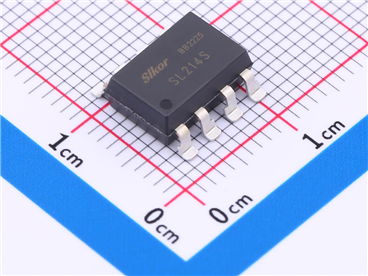
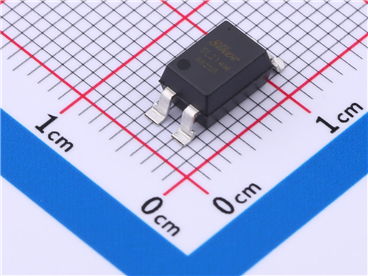
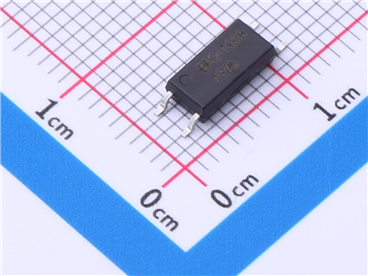
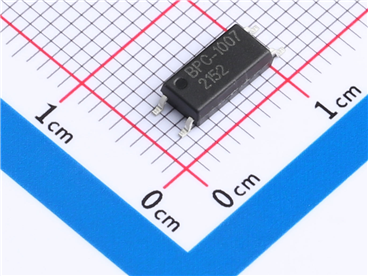


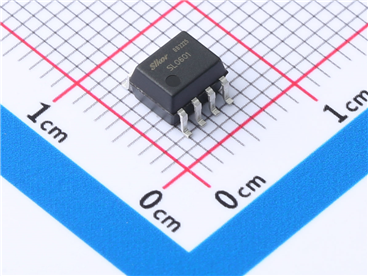

Site Map | 萨科微 | 金航标 | Slkor | Kinghelm
RU | FR | DE | IT | ES | PT | JA | KO | AR | TR | TH | MS | VI | MG | FA | ZH-TW | HR | BG | SD| GD | SN | SM | PS | LB | KY | KU | HAW | CO | AM | UZ | TG | SU | ST | ML | KK | NY | ZU | YO | TE | TA | SO| PA| NE | MN | MI | LA | LO | KM | KN
| JW | IG | HMN | HA | EO | CEB | BS | BN | UR | HT | KA | EU | AZ | HY | YI |MK | IS | BE | CY | GA | SW | SV | AF | FA | TR | TH | MT | HU | GL | ET | NL | DA | CS | FI | EL | HI | NO | PL | RO | CA | TL | IW | LV | ID | LT | SR | SQ | SL | UK
Copyright ©2015-2025 Shenzhen Slkor Micro Semicon Co., Ltd